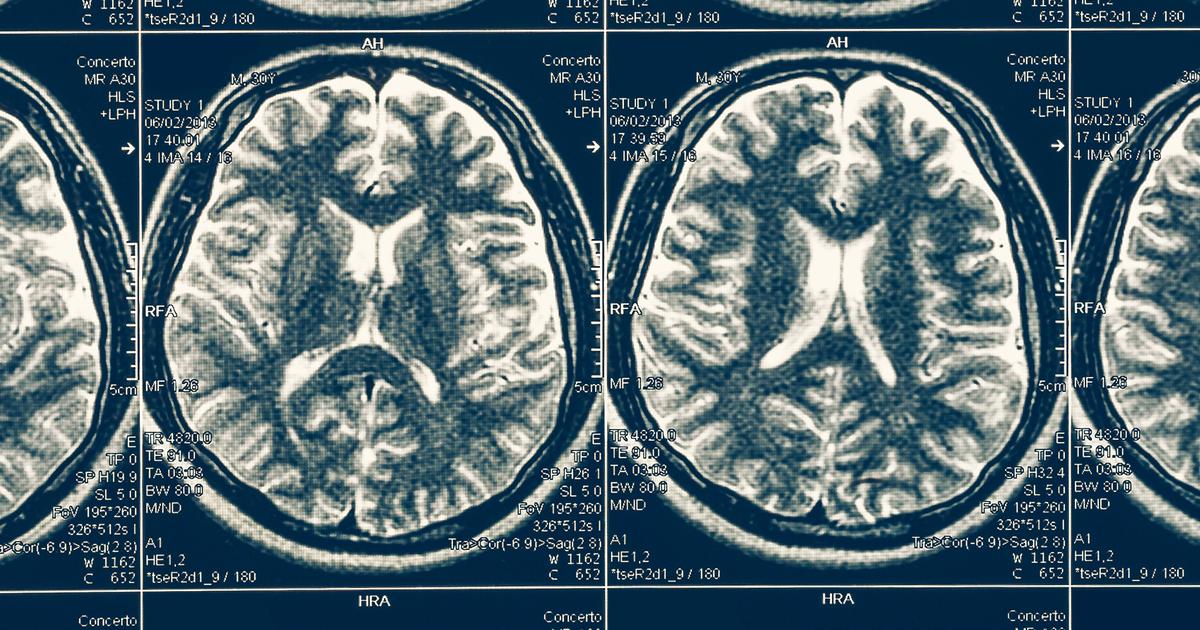Warning Signs Of Arachnoiditis
Arachnoiditis is a neurological disorder caused by inflammation of the protective membrane around the spinal cord, called the arachnoid. There are several causes for arachnoiditis, including impact injury to the spine, contact with the chemicals in radiographic contrast media, infection, compression of the nerves in the spine and spinal surgery. Diagnosis for arachnoiditis is typically made through the use of a CAT scan or MRI, and an EMG can be used to determine the severity and extent of nerve damage. While there are several treatment options for arachnoiditis, and they typically center on pain management, exercise, and psychotherapy, there is currently no cure for the disease. Get familiar with the warning signs of arachnoiditis now.
Severe Shooting Pain

The most common symptom experienced by individuals with arachnoiditis is severe shooting pain that may feel like a bolt of electricity coursing through the body. As the arachnoid swells, it presses outwards on nerves, which then send pain responses to the brain. The pain is often debilitating and constant and interferes with everyday activities such as work, school, and exercise. Left untreated, it can result in permanent disability. Non-steroid anti-inflammatories are the typical treatment to decrease pain symptoms, as are oral or intravenous corticosteroids.
Continue reading for more signs of arachnoiditis to watch for.
Muscle Cramps And Spasms

Arachnoiditis patients often experience muscle cramps and spasms. This symptom is believed to be caused by an obstruction of the circulation of cerebrospinal fluid due to the swelling of the arachnoid. Muscle cramps and spasms can also be attributed to scar tissue. Treatment for spasms related to arachnoiditis typically includes massage therapy to loosen muscles and promote healthy oxygen flow throughout the body, as well as water therapy. Most patients with arachnoiditis will also be encouraged to engage in exercise therapy to increase muscle strength and relieve inflammation. Heat therapy is often used to warm cramping muscles, relieving tension and alleviating pain.
Learn more about the warning signs of arachnoiditis now.
Weakness In The Legs

Weakness in the legs is a common symptom experienced by those with arachnoiditis. Severe inflammation and swelling of the arachnoid may result in leg paralysis. Leg weakness is attributed to inflammation of the spinal nerves resulting in atrophy and damage. Treatment for leg weakness can include sending an electrical current directly to the spinal cord to stimulate the nerves or the use of transcutaneous electrical nerve stimulation (TENS), which involves sending an electric current directly to the area experiencing pain. The use of TENS not only improves movement but also reduces pain.
Continue reading for more on the symptoms of arachnoiditis.
Tingling And Numbness In The Legs

Compression of the spinal cord and nerves due to inflammation of the arachnoid can result in tingling and numbness in the legs. Sensations may vary from individual to individual. However, many patients have reported the tingling experienced with arachnoiditis is similar to the feeling of insects crawling on the skin or water trickling down the leg. Nerve stimulation treatment has been found to be very beneficial in restoring feeling to legs and reducing the uncomfortable feeling of tingling. Other treatments include exercise therapy to promote blood flow to aid in the reduction of inflammation, as well as water therapy.
It's time to read about the next warning sign of arachnoiditis.
Bladder And Bowel Problems

Lower spinal cord nerve compression can result in bladder and bowel problems. The nerves in the lower spine aid in the function of the bladder, bowel, and genitals. When these nerves are affected, individuals may experience trouble emptying their bladder and constipation. Exercise therapy can aid in nerve decompression decreasing constipation as well as massage. In rare cases where contemporary and established treatments are ineffective, surgery may be required to remove scar tissue surrounding the nerves connecting the bladder and the bowel. Physicians tend to use surgery as a last result in the treatment of arachnoiditis due to the fact it carries a high risk of scarring in regards to the spinal connective tissue.
Unveil another symptom of arachnoiditis by reading more now.
Meningitis

Meningitis is a disease characterized by swelling of the meninges. This condition is often seen as a potential symptom of arachnoiditis, considering arachnoiditis is the result of damage to the arachnoid mater, which is one of the membranes that cushion the spinal cord nerves and the brain. The arachnoid mater, incidentally, is the middle tissue of the meninges. If a patient has meningitis, they will also present with symptoms of this condition. These include a sudden high fever, headaches accompanied by nausea or vomiting, light sensitivity, stiff neck, a rash on the skin, confusion, fatigue, and irritability.
Read about more signs of arachnoiditis in patients.
Ringing In The Ears

One of the major and annoying side effects of dealing with arachnoiditis and the damaged membranes that cause it is a persistent ringing in the ears (tinnitus). The ringing in the ears is not widely considered a condition of its own, but rather a symptom of other conditions. In any case, tinnitus can occur in patients for many reasons. One such reason, of course, is damage to nerves in and around the ear. These nerves can be damaged in many ways, such as being exposed to loud noises over an extended period. Tinnitus may also be the result of earwax blockage as well as age-related hearing loss. Any patient who is experiencing ringing in the ears should visit a hearing specialist to have their hearing evaluated and start the process of determining the cause.
Continue reading for additional symptoms of arachnoiditis now.
Vision Changes

Individuals dealing with arachnoiditis may also experience a few different changes in their vision. This includes decreased vision, as well as blurry or otherwise hazy vision, and in some instances, the eyes may also become quite sensitive to light, making it harder to see during or after being in brighter lights. This particular change in vision may also be indicative of another symptom of arachnoiditis, discussed next. In severe cases, and when not treated correctly and quickly, some patients with arachnoiditis may also be looking at losing their vision as well.
Get to know more about the warning signs of arachnoiditis now.
Migraines

Migraines are more than just simple headaches. In fact, someone who suffers from chronic migraines is considered to have a headache disorder. Migraines are known to occur most often on one side of the head. The pain of a migraine is typically pulsating in nature and can last from two to seventy-two hours. Individuals may also experience nausea, vomiting, as well as increased sensitivity to light, sound, and smell.
Migraines are also a common symptom of arachnoiditis. However, it should be noted migraines alone are not enough for a diagnosis, as individuals can only experience migraines without having other conditions, as well as the fact migraines are a sign for many medical conditions.
Keep reading for more information on how to spot arachnoiditis.
Issues With Balance And Walking

A number of the other symptoms of arachnoiditis discussed thus far can also result in the patient with this condition also having some issues with their balance and walking normally. These issues are the result of the membrane damage that characterizes this condition. Numbness, tingling, and weakness in the legs can also cause problems with an individual’s ability to walk and maintain their balance, as can involuntary muscle spasms and the severe shooting pain patients with arachnoiditis tend to experience. In fact, research indicates as many as seventy percent of patients with arachnoiditis severe enough to cause symptoms experience difficulties with balance.
Read more about the symptoms of arachnoiditis now.
Chronic Fatigue

Chronic fatigue is a symptom that occurs less commonly with arachnoiditis, but if paired with other symptoms of the condition, it can be an important warning sign to look out for. Many illnesses can cause chronic fatigue in addition to arachnoiditis. One is chronic fatigue syndrome, where chronic fatigue is the main component. Fibromyalgia can also cause this symptom in addition to aching throughout the body. With chronic fatigue, affected individuals will feel tired and lethargic even if they have gotten enough sleep. They may feel like they need more sleep or frequent naps to function. Their brain might feel 'foggy,' and their cognitive processing may be slower. These symptoms must last for several weeks to be considered chronic.
Keep reading to learn more about the different symptoms associated with arachnoiditis now.
Hearing Changes

One of the common signs of arachnoiditis is hearing changes, which may be accompanied by ringing in the ears. There are a variety of potential problems that might occur with an arachnoiditis patient's hearing. They may have trouble hearing certain pitches of sounds, certain types of consonants, or hearing in general. They might also feel like their ears are plugged. Changes in hearing occur because cerebrospinal fluid circulation has been impeded and altered by fibrosis, scar tissue, and clumped roots of nerves. If an individual is experiencing problems with their hearing, they should see an audiologist. If they're related to arachnoiditis, it's important to diagnose the condition as soon as possible. Even if unrelated to arachnoiditis, however, many hearing issues can be treated and improved through assistive devices like hearing aids.
Get more details on warning signs of arachnoiditis now.
Hydrocephalus

Hydrocephalus is a condition that occurs when fluid builds up in the cavities found deep inside the brain. When the fluid increases, these cavities increase in size and cause pressure against the rest of the brain. Cerebrospinal fluid typically flows in smooth channels through the cavities so it can bathe the spinal column and brain. However, when there's too much of this fluid in the cavities, it can lead to hydrocephalus and brain damage. When associated with arachnoiditis, hydrocephalus occurs because there have been alterations to the way cerebrospinal fluid flows and is processed by the body. Because hydrocephalus can have permanently disabling and life-threatening complications, it's important to get it diagnosed and treated as soon as possible.
Learn more about the major symptoms linked to arachnoiditis now.
Inability to Sweat

One symptom that may occur alongside arachnoiditis is an inability to sweat, referred to as anhidrosis. Trouble sweating can cause the body to overheat. Normally, sweat helps to cool the body, but when this function is impaired, the body has trouble cooling down normally. If anhidrosis leads to heat stroke, the complications have the potential to be fatal. An inability to sweat can be hard to diagnose. In mild cases, affected individuals may not even notice it. Arachnoiditis isn't the only condition that can cause anhidrosis, but it is one of the more serious ones. If an individual experiencing anhidrosis and any other neurological or sensory-related issues, it's best to see a doctor as soon as possible.